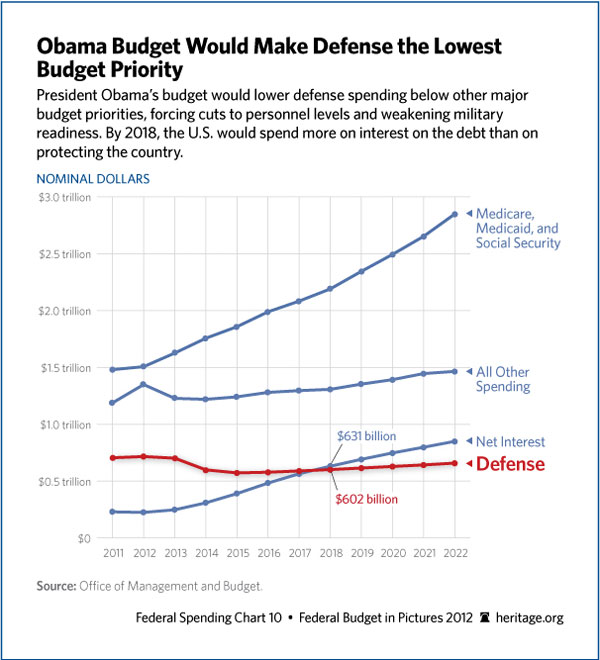New Administration Report Gives Few Details on Sequestration’s Military Cuts
Brian Slattery /
The White House is attempting to use the U.S. military as a bargaining chip to force Congress to raise taxes—the looming “sequestration” budget cuts were never supposed to happen, because Congress was supposed to come to a budget agreement.
Now the military faces deep, across-the-board cuts. The President has attempted to pass blame on the impending cuts to the House of Representatives, as it passed the bill that set sequestration in motion. However, as journalist and author Bob Woodward indicates in his new book, the Administration instigated the idea of the budgetary measure to gain political ground. Furthermore, the President’s own defense budget request would dramatically shrink the defense budget.
According to a congressionally mandated report released today—a week past the deadline—by the Obama Administration, discretionary national defense funding will be reduced by 9.4 percent under a regime of automatic spending cuts scheduled to start in January. Yet the report does not shed much light on what future forces will look like. Regardless of how the Obama Administration accounts for the cuts, the fact remains that it will severely undermine the military’s ability to protect the nation. (continues below chart)
The report results from bipartisan concern in Congress this summer about the impact of the crude enforcement component of last year’s debt ceiling agreement, the Budget Control Act. Its across-the-board “sequestration” was triggered when the congressional “super committee” failed to recommend any of the $1.2 trillion in 10-year deficit reduction that was required.
Until passage of the Sequester Transparency Act, which required today’s report, the Administration had been reticent on how the spending cuts would be implemented and what impact they would have.
The most crippling effect will be on national defense, which will absorb roughly half—$492 billion—of the mechanically driven cuts. Meanwhile, the badly designed mechanism protects the biggest drivers of federal deficits and debt from cuts: Social Security (which will spend an estimated $768 billion this year), Medicaid ($253 billion), and all but 2 percent of Medicare ($550 billion). Those three programs account for nearly 45 percent of total federal spending, yet they are all nearly untouched by sequestration—forcing deeper cuts in other areas.
The House Armed Services Committee has already illustrated sequestration’s effects, and they are bleak. The Navy will shrink to its lowest fleet size since 1915. The Air Force will be forced to operate with fewer fighters than at any point in its history. America will have a smaller ground force than at any point since 1940.
Unlike the Clinton Administration’s military drawdown, sequestration will weaken an already eroded force. While Clinton reduced the robust force built by the Reagan Administration, the current state of the U.S. military is far more vulnerable. The Air Force, Navy, and Army are each currently operating old, overused, and sometimes poorly protected equipment and weapons systems.
Lawmakers should not tout the Department of Defense as a massive jobs program. However, the skills, experience, and clearances required to build the greatest military in the world are sensitive to rapid changes in funding. A master welder working on a nuclear submarine has spent years to develop his or her craft; if such workers leave the industry, it takes years to replace them.
It doesn’t take a report from the White House to see how sequestration will harm national security. Congress needs to act quickly to reprioritize the defense cuts—without raising taxes—and uphold its constitutional responsibility to provide for the common defense.

